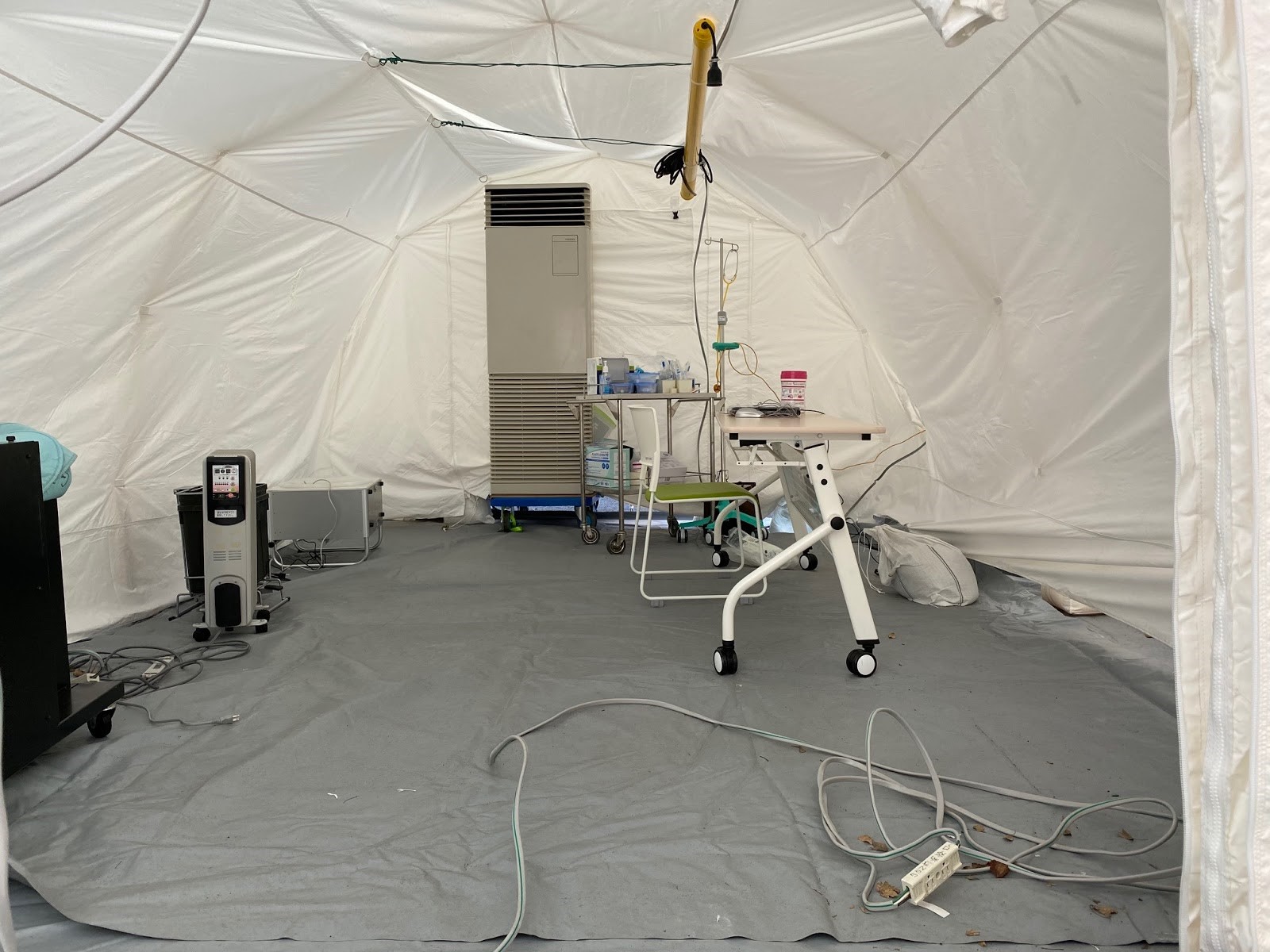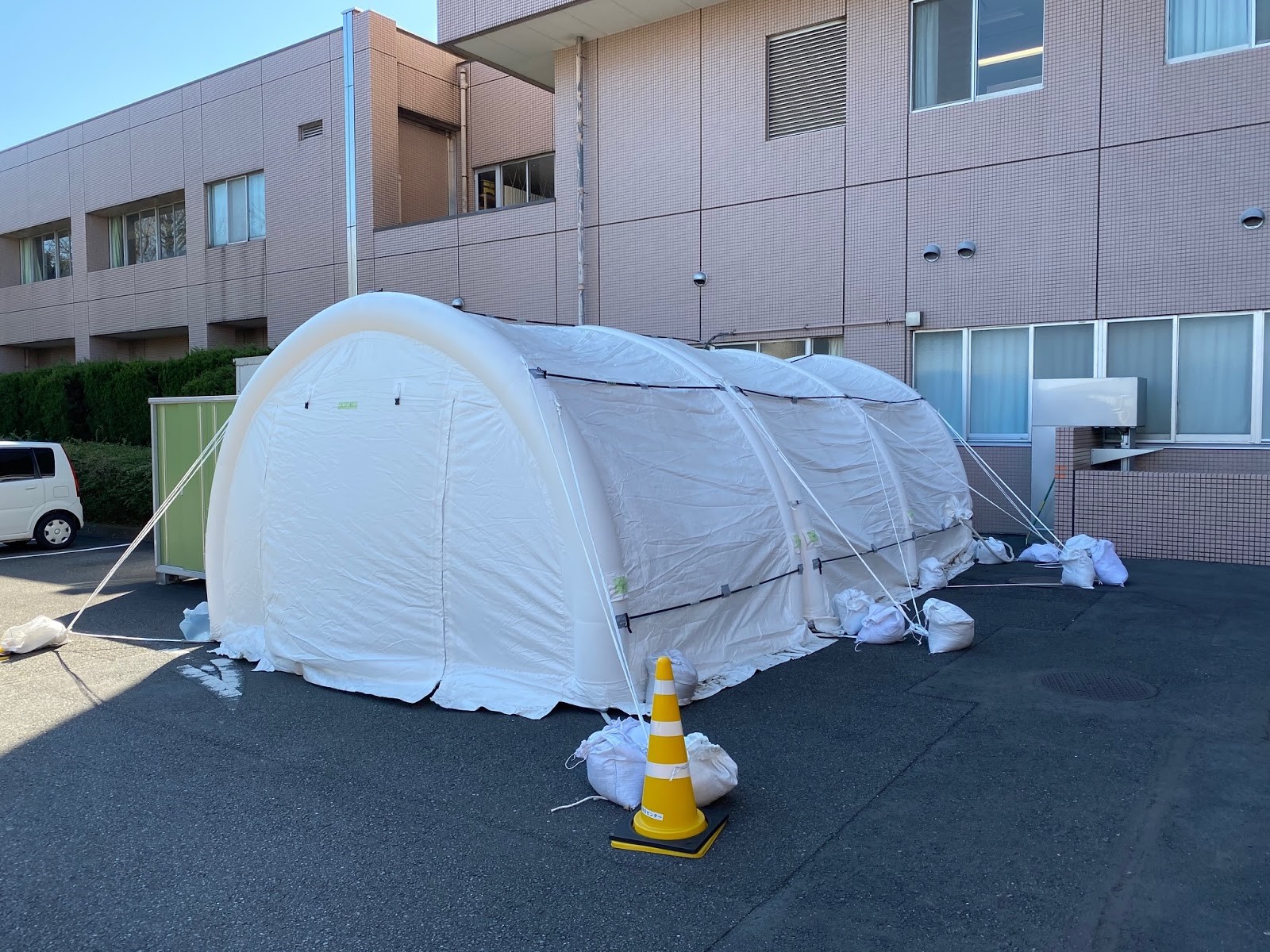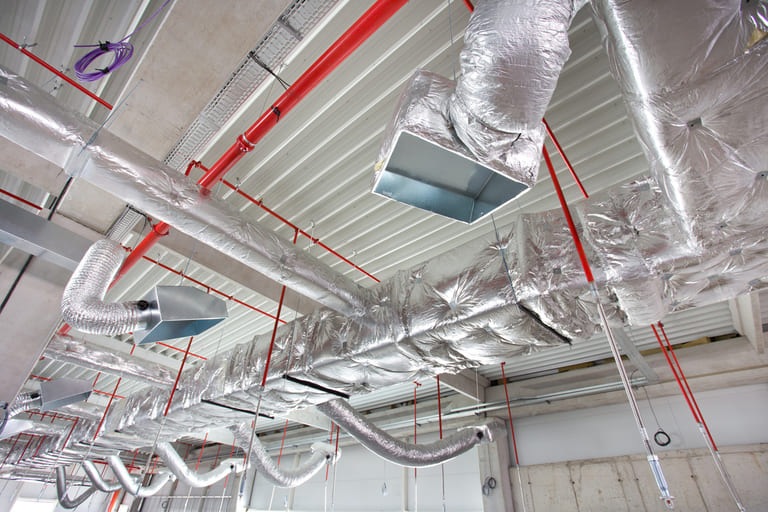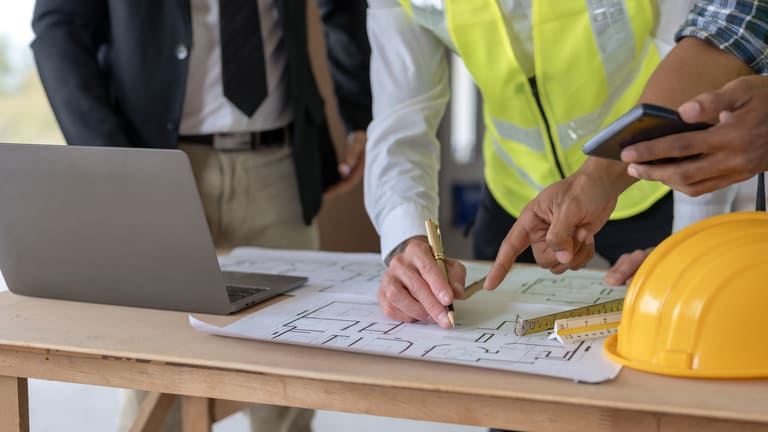

Taiyo Kogyo Column
Nosocomial Control of Infectious Diseases and Medical Negative Pressure Tent Prices
2020.04.06

2020年現在、新型コロナウィルスが猛威を振るっています。新型コロナウィルスがオーバーシュート時のリスクの一つとして、感染者数に対して十分な医療施設が確保されない状況が考えられます。
病院など全国の医療機関が十分に能力を発揮できるよう、そして非感染者を含む患者が安心して利用できるよう、医療現場における院内感染は徹底した対策が検討されています。
各施設で綿密な院内感染防止マニュアルが設定されている中、さらに効果を高めるために大きな注目を集めているのが、医療用陰圧テントです。

Current awareness of nosocomial infections
Nosocomial infection is defined by wikipedia as follows
“Nosocomial infection (Hospital-acquired infection, Nosocomial infection) is the infection of a new bacterial, viral, or other pathogen within a hospital or medical institution. This term is a counterpart to “community-acquired infection,” which describes infections outside of a hospital. It refers specifically to infections caused by drug-resistant pathogens and opportunistic infections.”
A situation in which infection spreads within a healthcare facility where infected people congregate; the importance of this situation has been reassessed due to the 2009 H1N1 influenza and 2020 H1N1 coronavirus outbreaks, and each facility has set up a manual to address this issue.
Reasons and causes of nosocomial infections
院内感染はなぜ発生してしまうのでしょうか。感染症は、接触・飛沫・空気の主に3つの経路で感染が拡がるといわれており、病院内もこれら経路の例外ではありません。
感染者が多く訪れる中、他の病気や治療によって免疫力や体力の衰えた患者が同じ空間にいることで、むしろ院内は感染しやすい状況であるともいえます。さらに患者同士の感染だけでなく、感染者に対応する医師や看護師やその他のスタッフなどが病原体を運んでしまう場合もあり、病院では徹底的な感染対策がなされています。
How to prevent nosocomial infections
The All Japan Hospital Association presents specific methods of nosocomial infection control, which are listed in three pillars.
- Prevention of outbreaks of infectious diseases in individual patients
- Prevention of patient-to-patient transmission of pathogens
- Prevention of Occupational Infections
Measures include wearing masks, goggles, gloves, and gowns to prevent contact, droplet, and airborne infection routes, respectively. In addition, each hospital facility has its own manual for preventing nosocomial infections, including thorough disinfection of hands and equipment.

(Cited from “Nosocomial Infection Prevention Measures” by the All Japan Hospital Association) And to further enhance the effectiveness of nosocomial infection prevention, medical negative pressure tents have recently been attracting attention.
Medical Negative Pressure Tent for effective nosocomial infection control
This section explains how medical negative pressure tents work.
What is a Negative Pressure Tent?
The negative pressure tent is connected to a device called a “negative pressure filter system. This device lowers the air pressure in the main tent, where medical procedures are performed, below that of the outside. In addition, the filter system filters out viruses inside the tent, and only clean air is discharged to the outside, preventing the spread of viruses. Even inside the main tent, air flow is maintained in a constant direction, creating an environment that prevents secondary infection among medical personnel. The structure is as follows
Generally, a front room is provided separately from the main room equipped with a negative pressure device, and is used as a waiting room. Or, partitions are used. It is also envisioned that an environment conducive to medical treatment can be set up, even in an emergency, by installing an inner membrane and an air-conditioning unit.
Objective 1: Prevent the spread of infection in dedicated facilities
The primary purpose of medical negative pressure tents is to provide a dedicated space for infectious disease control separate from the hospital. By separating the flow of patients with infectious diseases from the rest of the patients, unnecessary contact between patients can be avoided and nosocomial infections can be prevented.
Objective 2: Quickly set up in case of emergency
Outbreaks of major outbreaks of infectious diseases are difficult to predict and require a rapid response when they do occur. Medical negative pressure tents are compact when not in use, and their light weight makes them easy to remove and carry. They can be set up in a short period of time and by two men. In the fastest cases, the tent can be up and running in as little as one minute.
McQuick Shelter, a superior medical negative pressure tent
Among medical negative pressure tents, the Mc-Quick Shelter from Taiyo Kogyo Corporation has the best features and was introduced in many cases during the 2009 H1N1 influenza pandemic. In addition to the negative pressure filter system, the McQuick Shelter has several other advantages. It is highly effective in nosocomial infection control, which requires a quick response.
- 超短時間で立ち上げ可能:最短で約1分程度で立ち上がります。
- 収納も迅速:立ち上げだけでなく、移動などのための収納も迅速です。5分程度で収納が完了します。
- 少ない人数で設置できる:最少で大人2人いれば、設置・収納が可能です。
- 優れた安定性:屋根膜とエアビーム(柱)が一体化しており、形状安定性に優れます。
- 火災対策:膜材には防炎製品を使用しているため、高い防火性を誇ります。
- 現場でメンテナンス可能:一般的なテントは破損すると工場に持ち込んで修理が必要ですが、マク・クイックシェルター現場で簡単にメンテナンス可能です。
- 高い断熱性と対結露性:二重膜仕様の膜材なら、断熱性に優れるため冷暖房効率が高まる他、カビの発生原因になる結露も抑えることができます。
Taiyo Kogyo Corporation: Click here for inquiries about “McQuick Shelter “.
Medical Negative Pressure Tent Price
At what price point can a medical negative pressure tent be installed? The following table, along with detailed specifications, will help you determine.
|
Medical Negative Pressure Tent Details and Pricing
|
||
| 本体 | 前室(オプション) | |
| サイズ | W4m×L5m×H2.5m | W4m×L2.5m×H2.5m |
| サイズ(収納時) | 85cm×85cm×50cm | 75cm×75cm×40cm |
| 本体重量 | 約70kg | 約30kg |
| エアビーム(柱)本数 | 3本 | 2本 |
| Openings | 2 entrances (gable end) 1.8m wide x 1.8m high | |
| Main body | PET+PVC (Flameproof grade 2) | |
| Inner tube | Polyurethane (flame retardant grade 2) | |
| Inner membrane | Polyester 250D (Certified by Japan Fire Retardant Association) | -Inner membrane is made of |
| FRP Rod | Φ15mm 5 rods (connected) | |
| 照明 | LED(40W相当2本) | – |
| Electric blower | Maximum air volume 2.7m3 Maximum vacuum 23kPa | -2.7m3 |
| 価格 | 3,200,000円 | 1,550,000円 |
Although negative pressure tents are effective, price may be a bottleneck depending on the size of the facility or other facilities you are considering installing. In such cases, regular air tents without negative pressure facilities can be expected to have a certain level of effectiveness. Depending on the model, they can be installed at less than half the price, making it possible to keep costs down. Details and prices of air tents without negative pressure facilities are shown in the table below.
|
Details and prices of air tents without negative pressure facilities (mass production type)
|
||
| MQ-442-A | MQ-452-A | |
| サイズ | W4m×L4m×H2.5m | W4m×L5m×H2.5m |
| 収容人数 | 8~10人 | 10~12人 |
| サイズ(収納時) | 80cm×80cm×50cm | 85cm×85cm×50cm |
| 本体重量 | 約55kg | 約70kg |
| Number of air beams (columns) | 3 air beams | |
| Openings | 2 entrances (gable end) 1.8m wide x 1.8m high | |
| Windows | Ventilation window with roll-up cover x 4 places (side) 70cm x 72.5cm wide | |
| Main body | PET+PVC (Flameproof grade 2) | |
| Inner tube | Polyurethane (flame retardant grade 2) | |
| FRP Rod | Φ15mm 5 rods (connected) | |
| 価格 | 1,380,000円 | 1,880,000円 |
| Accessories/Specifications | ・電動送風ユニット込み ・連結仕様(妻膜脱着可) ・排気ダクト孔 ・内膜用バックル付き(内膜は別途) |
|
summary
Although awareness of nosocomial infections has increased amid the outbreak of the new coronavirus, two major measures are still required.
- Dedicated facilities prevent the spread of infection.
- Quick installation in case of emergency
We have found that medical negative pressure tents are effective in preventing nosocomial infections. We strongly suggest that you consider the introduction of medical negative pressure tents. If you would like more detailed information not included in this article, you can contact Taiyo Kogyo Corporation at the following website. Taiyo Kogyo Corporation: Inquire about Medical Negative Pressure Tents.
Related Articles
- TOP>
- Taiyo Kogyo Column>
- Nosocomial Control of Infectious Diseases and Medical Negative Pressure Tent Prices








